telescope
Latest
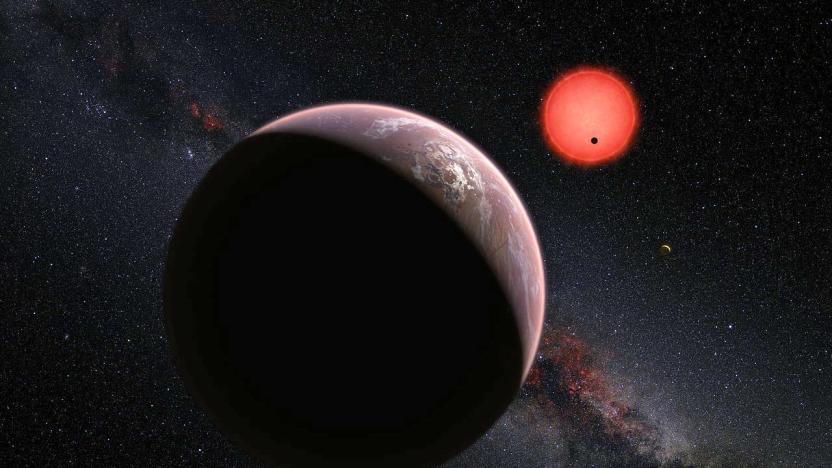
Three Earth-sized planets exist in the Aquarius constellation
It's the dawning of the age of Aquarius. Well, the discovery of three planets orbiting a cooler-than-the-Sun dwarf star located in the Aquarius constellation, according to NASA. A number of telescopes, including the TRAPPIST at the La Silla Observatory in Chile were used in this trio, and the star itself bears the name TRAPPIST-1 for pretty obvious reasons. The planets are Earth-like in size and two of them orbit the star roughly every 1.5 and 2.4 days. The third one has proven a bit harder to track, with NASA saying its orbit is anywhere between 4.5 to 73 days.

Hubble discovers that dwarf planet Makemake has a moon
The Hubble telescope has spotted a shadowy moon with a charcoal black surface orbiting the dwarf planet Makemake. Astronomers first observed Makemake in 2005, but since it's the second brightest icy dwarf planet after Pluto, it took some time to see a satellite that's 1,300 times fainter than the celestial body it's orbiting. Also, it's positively tiny with a diameter measuring 100 miles across, making it but a fraction of our own moon that has a diameter measuring 2,159.2 miles. The Hubble team used the telescope's Wide Field Camera 3 and the same technique that found Pluto's satellite's in 2005, 2011 and 2012 to discover Makemake's companion that has been christened "MK 2." NASA says its presence can tell us more about the dwarf planet, including its density.
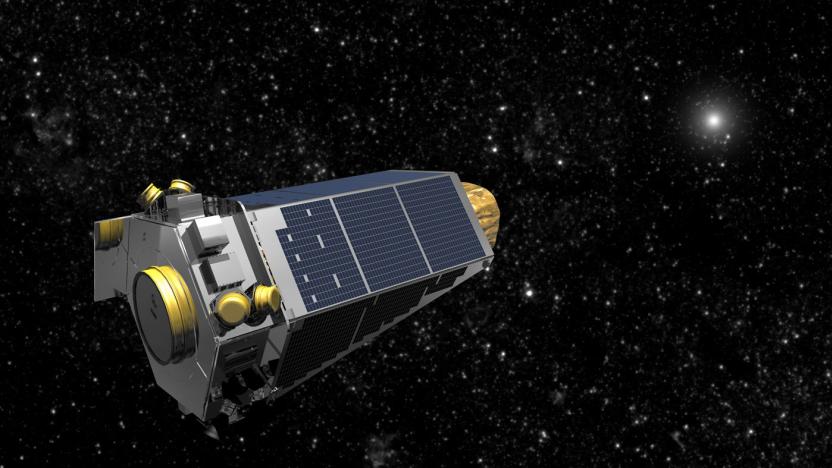
NASA's Kepler space telescope is back in good health
You can breathe again, space fans -- NASA has returned the Kepler space telescope to normal after a nerve-wracking weekend spent in an emergency mode. It's still not clear what triggered the crisis (a planned maneuver wasn't at fault), but the team plans to double-check systems for the next week before carrying on with its extended mission. Let's just hope this doesn't happen again. Kepler barely managed to survive its first big incident, and there's no guarantee that it'll be so lucky the third time around.

NASA's resurrected telescope seeks wandering planets
NASA is kicking off a search for free-spirited exoplanets as part of the Kepler space telescope's extended K2 mission. It's an impressive quest for an instrument that was all but written off several years ago because of damage to its control wheels. NASA managed to stabilize the device using radiation pressure from the sun and it's been spotting exoplanets, stars and galaxies ever since. Now, the space agency wants to use the device to survey millions of stars in the Milky Way galaxy looking for signs of "wandering" exoplanets with no companion star.
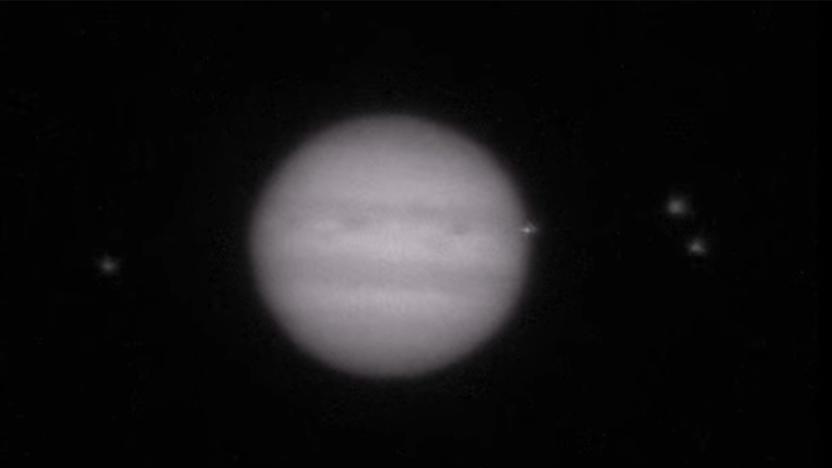
Amateur astronomers caught a Jupiter impact on camera
Jupiter gets hit by wayward celestial objects surprisingly often (about once per year), but you'd be forgiven if you didn't know it. Not all of them are visible, and professionals can only observe so much. However, the rise in readily accessible astronomy tech just helped detect one of these encounters. Amateur astronomers from Austria and Ireland have recorded videos showing that something, most likely an asteroid or comet, struck Jupiter on March 17th. The collision only lasted for a split second (blink and you'll miss it in the videos below) but it was ferocious -- even if the object was only a few hundred feet across, Jupiter's intense gravity guaranteed a high-velocity impact that would be visible from Earth.
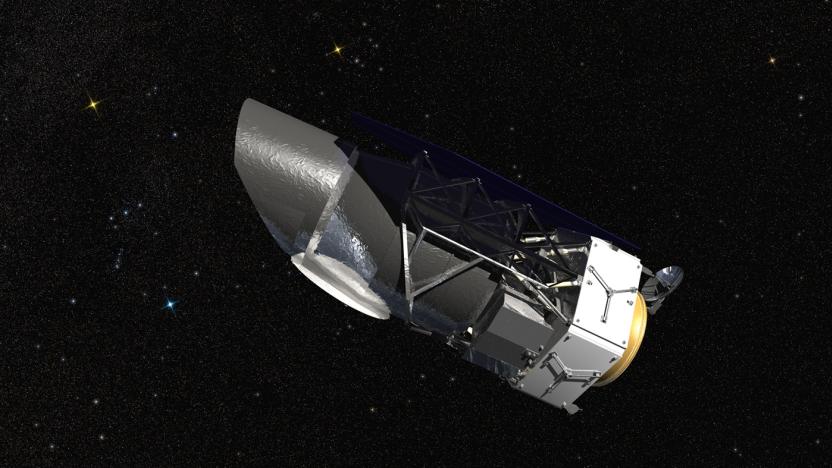
NASA's next space telescope sees 100 times more than Hubble
As much as the Hubble Space Telescope has done to shine a light on the darkest corners of the universe, it doesn't hold a candle to what's coming next. NASA has started work on WFIRST (Wide Field Infrared Survey Telescope), a space observatory with a field of view 100 times larger than that of Hubble -- if the old telescope was a porthole, the new one is a giant window. It's also designed to block the glare of individual stars, making it easier to determine the chemical makeup of exoplanets.

ICYMI: NASA's new telescope, amazing robot hand and more
#fivemin-widget-blogsmith-image-777419{display:none;} .cke_show_borders #fivemin-widget-blogsmith-image-777419, #postcontentcontainer #fivemin-widget-blogsmith-image-777419{width:570px;display:block;} try{document.getElementById("fivemin-widget-blogsmith-image-777419").style.display="none";}catch(e){}Today on In Case You Missed It: NASA just started developing the Wide Field Infrared Survey Telescope, slotted to hit space by the mid-2020s. This will good 'ole Hubble still chugged away, analyzing the atmosphere of an exoplanet 40 light years away. University of Washington developed a robotic hand capable of carefully holding small, delicate objects by first 3D printing a hand based on a human skeleton, then adding tendons and muscles just where a person's would be. For those of you with any difficulty typing, this DIY creation pairs speech recognition with mechanical buttons for some riveting viewing. If you didn't read it, make sure to dive into the Apple vs. FBI debate here. As always, please share any interesting science or tech videos, anytime! Just tweet us with the #ICYMI hashtag to @mskerryd.
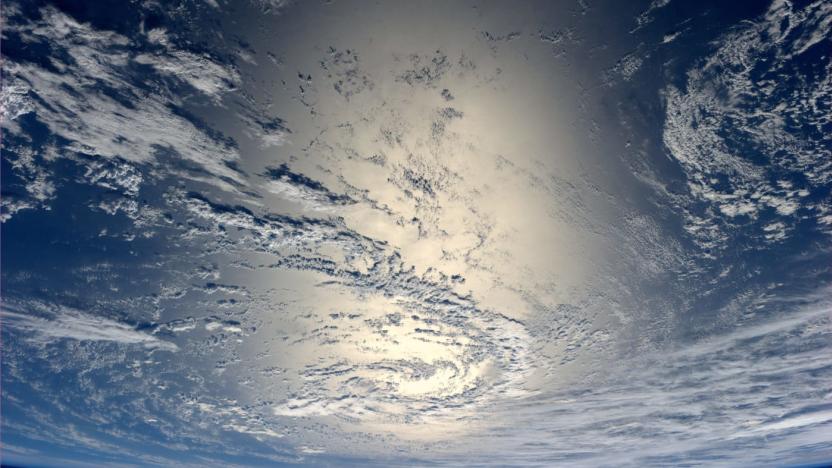
Exoplanet census suggests Earth really is special
There are an estimated 700 million trillion terrestrial planets in the observable universe. Among them, Earth may very well be one of a kind according to a new study from Uppsala University in Sweden. Astronomer Erik Zackrisson and his team have been running computer simulations to model all of the terrestrial planets that are likely to exist in the universe. The probabilistic exoplanetary statistics that they've gleaned from these simulations could potentially upend the Copernican principle and will soon be published in The Astrophysical Journal (it's currently up on arXiv).

Japan's X-ray satellite Astro-H will soon blast off to space
Japan Aerospace Exploration Agency's (JAXA) newest (and sixth!) X-ray observatory is leaving for space on Friday to study black holes and galaxy clusters. It's called Astro-H, and it's blasting off with several scientific instruments in tow. These include ones that can detect X-ray sources 10 times fainter than what its predecessor, the Suzaku, could detect. The star of the show, though, is its Soft X-Ray Spectrometer (SXS), which is fitted with a "microcalorimeter." The Goddard-built spectrometer (designed in cooperation with various Japanese institutions) will use that device to measure and distinguish X-ray colors.

Lockheed Martin works on smaller, more powerful telescope tech
To make space telescopes more powerful, scientists would have to make their lenses larger. The bad news is it's not only tricky to make huge lenses (remember Hubble's spherical aberration?), it's also expensive to manufacture and ship them out to space. That's why Lockheed Martin is currently developing a technology that could lead to lighter, thinner and relatively cheaper alternative to the traditional two-lens telescope design. The tech called Segmented Planar Imaging Detector for Electro-optical Reconnaissance (or SPIDER) replaces the classic lenses with thousands of tiny ones.

Hawaiian court nullifies Thirty Meter Telescope's building permit
The Thirty Meter Telescope's story has been so full of trials and tribulations, a producer might just find a way to turn it into a soap opera. On Wednesday, the Hawaii Supreme Court has canceled the TMT group's permit, which gives them the right to build the gargantuan telescope atop the Mauna Kea volcano. According to the court, the Board of Land and Natural Resources should not have given the project permission to go forward before it had the chance to hear the side of a group petitioning against its approval. If you recall, the various universities and institutions from the US, Canada, China, India and Japan that make up the team had to wait for over a decade and overcome numerous hurdles before construction began in 2014.

See what every star system Kepler's found looks like compared to ours
Since its launch in 2009, the Kepler spacecraft has discovered more than 1700 planets in some 685 star systems. This slick animation from YouTuber Ethan Kruse shows every one of them with their orbits synchronized and drawn to scale. The planets themselves aren't exactly to spec -- I mean, just look at how small Jupiter is -- but that's only so that the smaller exoplanets aren't completely crowded out. Kruse reportedly employed the open source Kepler Orrery code to create the animation.

The Hubble Telescope's breathtaking views of space
We already showed the Hubble Telescope some love back in the spring when it turned 25. However, since it's Space Week, we thought we'd revisit some of its amazing space imagery once more. Since it launched aboard the Space Shuttle discovery in 1995, Hubble has captured breathtaking views of planets, galaxies and more for us to enjoy. That being said, let's get started with the telescope's most recent work: a photo of spiral galaxy NGC 613.

World's most advanced digital camera will power the LSST telescope
If you think the 50-megapixel sensor in your new DSLR is hot stuff, you haven't seen anything yet. The Department of Energy has given the all-clear to build the Large Synoptic Survey Telecscope's 3.2-gigapixel digital camera, which promises to be the most advanced in the world. It's not just the resolution (which easily eclipses that of sophisticated airborne surveillance cams) that lets scientists make such a bold claim. It will photograph patches of sky 40 times larger than the Moon, and pick up more light than any optical telescope on Earth -- both important factors when you're trying to study the early universe, track poorly-lit asteroids and understand dark energy. While the LSST's camera won't even see its first test runs until 2019, the output could easily justify those years of work.

ICYMI: 3D-printed telescope, bird drone and more
#fivemin-widget-blogsmith-image-338109{display:none;} .cke_show_borders #fivemin-widget-blogsmith-image-338109, #postcontentcontainer #fivemin-widget-blogsmith-image-338109{width:570px;display:block;} Today on In Case You Missed It: An open-source, 3D-printed telescope is being offered by the Open Space Agency so that hobbyists of all stripes can easily share their discoveries. The BionicBird drone flies by legit flapping its wings and I think I saw this in a movie once. And a video describing old musical tech has us all riveted: A behind-the-scenes view of the seven stories of pipes it takes to play the Wanamaker Grand Court Organ.

NASA satellite shows black hole 'bulls-eye' eruption
NASA said its Swift satellite has imaged some of "the best dust-scattered X-ray ring images ever seen" from a black hole outburst. The V404 Cygni black hole and its companion star, about 8,000 light years away, are known to eject high-energy particles every 20 years or so. Swift's X-ray telescope detected the start of a new burst on June 15th, grabbing the attention of scientists at the University of Leicester, UK. On June 30th, they captured an eruption of concentric rings from the system that covered a portion of the sky about half the diameter of the moon.

Telescope filter helps spot Earth-like alien worlds
In the hunt for planets around distant stars, the stars themselves are often the worst enemy. They're so bright that you rarely spot anything smaller than a gas giant, which isn't much help when you're trying to find habitable worlds. An alliance of American and Dutch researchers may have the ticket to locating Earth-like bodies, though. They've developed a new variety of coronagraph (a telescope filter that blocks starlight) powerful enough to give a much better view of the objects around stars, even when they're half as far from their hosts as Earth is to the Sun. The key is that it doesn't block light directly, like other coronagraphs -- it instead has the light waves cancel each other out, even in the infrared wavelengths where stars tend to blot out their orbiting companions.

Radio telescope spots previously unknown star-forming region
Scientists at the Institut de Radioastronomie Millimetrique (IRAM) have discovered that a region in the Medusa merger serves as home to thousands of recently formed stars. That region's called the Eye of Medusa, and it's a gas rich location smack-dab at the center of the merger, which, as its name implies, is a collision between two galaxies 100 million light-years away. The team has detected the newly birthed stars (pictured below the fold) for the first time using a powerful millimeter radio telescope in the French Alps called Northern Extended Millimeter Array or NOEMA. This discovery is actually a huge testament to how promising the observatory is, seeing as it's not even fully built yet: out of the 12 15-meter-diameter antennas planned for it, only seven are operational.

Hawaii's Thirty Meter Telescope could force others to close
For one to rise, others must fall. Hawaii's governor David Ige has given his blessing to the controversial Thirty Meter Telescope (TMT) that scientists want to build on the Mauna Kea mountain. But there's a catch -- in return, he wants "at least 25 percent" of the existing telescopes to be torn down. At the moment, there are 13 telescopes on the mountainside and only one is scheduled to be dismantled. Under Ige's new proposals, one facility would need to enter the decommissioning process this year, and the remainder in his 25 percent quota would need to be gone before the TMT is operational in the mid-2020s.

Radio telescope array could unlock the secrets of the early universe
To capture the night sky and better understand the formative years of our universe, astronomers are using something a tad more powerful than a traditional telescope. The Owens Valley Long Wavelength Array (OV-LWA) leverages 250 radio antennas, spread over a desert area equivalent to 450 football fields, to detect slender radio signals produced by distant pulsars, solar flares and auroras. Together, this army of antennas can capture the entire sky simultaneously and feed the resulting data back to the Owens Valley Radio Observatory. With over 25 terabytes flowing in every day, astronomers can study space weather, such as auroras, which occur when stars release magnetic energy.







